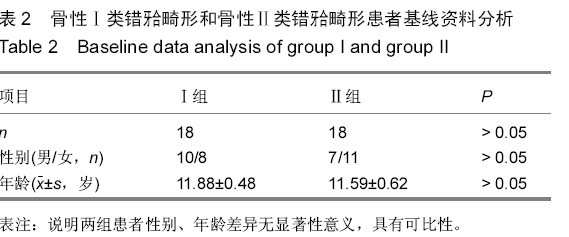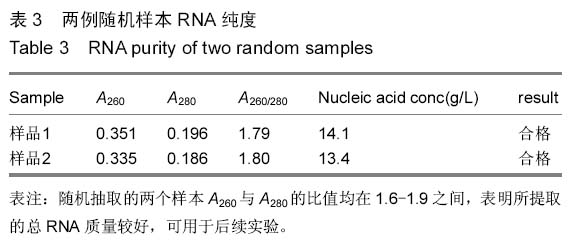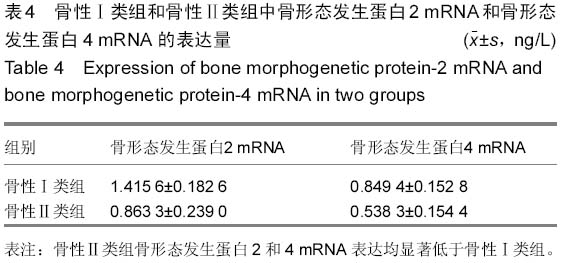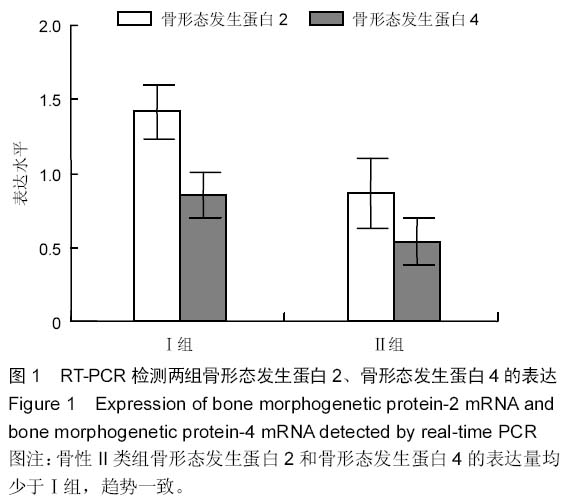| [1] 吴增波,王豫蓉.骨形成蛋白-4在骨性Ⅱ类错牙合畸形中的表达[J].中国保健营养,2012,22(6):1232-1233.
[2] 王伟,邱蔚六.骨形成蛋白2诱导骨形成研究进展[J].口腔材料器械杂志,1999,8(2):87-89.
[3] 华松.人骨形成蛋白2基因的克隆及序列测定[J].西北农林科技大学学报,2005,33(2):9-12.
[4] Liua W, Selevera J, Murali D,et al.Threshold-specific requirements for Bmp4 in mandibular development. Developmental Biology.2005;283:282-293.
[5] Ekanayake S, Hall BK.The in vivo and in vitro effects of Bone Morphogenetic Protein-2 on the development of the chick mandible.Int J Dev Biol.1997;41: 67-81.
[6] Tomo S, Ofita M, Toma I.Development of Mandibular Cartilages in the Rat.The Anatomical Record.1997; 249:233-239.
[7] Suzuki T, Bessho K, Fujimura K,et al.Regeneration of defects in the articular cartilage in rabbit temporomandibular joints by bone morphogenetic protein-2. Br J Oral Maxillofac Surg. 2002; 40(3):201-206.
[8] Tsuji K, Bandyopadhyay A, Harfe BD,et al.BMP2 activity, although dispensable for bone formation,is required for the initiation of fracture healing.nature genetics.2006; 12(38): 1424-1429.
[9] de Mara CS, Duarte AS, Sartori-Cintra AR,et al. Coimbra. Chondrogenesis from umbilical cord blood cells stimulated with BMP-2 and BMP-6.Rheumatol Int.2013;33: 121-128.
[10] Sailor LZ, Hewick RM, Morris EA.Recombinant human bone morphogenetic protein-2 maintains the articular chondrocyte phenotype in long-term culture.J Orthop Res. 1996;14(6): 937-945.
[11] 傅民魁.口腔正畸专科教程[M].北京:人民卫生出版社, 2007: 26-58.
[12] 陈扬熙.口腔正畸学-基础、技术与临床[M].人民卫生出版社, 2012: 588-600.
[13] Liu X, Zeng B, Zhang C.Osteogenic and angiogenic effects of mesenchymal stromal cells with co-transfected human Ang-1 gene and BMP2 gene.Biotechnol Lett.2011;33:1933-1938.
[14] Bai T, Yang J, Chen B, et al.Genetic analysis of BMP4 gene in Chinese Han female population with premature ovarian insufficiency. Climacteric.2014;17:304-306.
[15] 姜若萍,傅民魁.安氏Ⅱ类1分类错牙合患者亲子间相似性的个体研究[J].中华口腔医学杂志.2001,36(2):143-145.
[16] Peck S, Peck L, Kataja M. Class II Division 2 malocclusion: a heritable pattern of small teeth in well-developed jaws. Angle Orthod. 1998;68(1):9-20.
[17] Chou ST, Tseng YC, Pan CY, et al.Craniofacial Skeletal Dysplasia of Opposite-sex Dizygotic Twins.J Formos Med Assoc. 2011;110(5):342-346.
[18] Cruz RM, Krieger H, Ferreira R, et al.Major Gene and Multifactorial Inheritance of Mandibular Prognathism. Am J Med Genet A. 2008;146A(1):71-77.
[19] Ngo TQ, Scherer MA, Zhou FH, et al.Expression of Bone Morphogenic Proteins and Receptors at the Injured Growth Plate Cartilage in Young Rats. J Histochem Cytochem. 2006; 54(8):945-954.
[20] Shu B, Zhang M, Xie R, et al.BMP2, but not BMP4, is crucial for chondrocyte, proliferation and maturation during endochondral bone development. J Cell Sci. 2011;124(Pt 20): 3428-3440.
[21] Mi M, Jin H, Wang B,et al.Chondrocyte BMP2 signaling plays an essential role in bone fracture healing.Gene.2013;512: 211-218.
[22] De Luca F, Barnes KM, Uyeda JA, et al.Regulation of Growth Plate Chondrogenesis by Bone Morphogenetic Protein-2. Endocrinology.2001;142:430-436.
[23] Bennett JH, Hunt P, Thorogood P..Bone Morphogenetic Protein-2 And -4 Expression During Murine Orofacial Development.Archs oral biol.1995;40(9):847-854.
[24] Bonilla-Claudio M, Wang J, Bai Y,et al.Bmp signaling regulates a dose-dependent transcriptional program to control facial skeletal development. Development. 2012;139(4): 709-719.
[25] MacDonald ME, Hall BK.Hall.Altered Timing of the Extracellular-Matrix-Mediated Epithelial-Mesenchymal Interaction That Initiates Mandibular Skeletogenesis in Three Inbred Strains of Mice: Development, Heterochrony, and Evolutionary Change in Morphology.J Exp Zool.2001;291(3): 258-273.
[26] Rodríguez-Vázquez JF, Mérida-Velasco JR, Mérida-Velasco JA,et al.Development of Meckel’s Cartilage in the Symphyseal Region in Man. Anat Rec. 1997;249:249-254.
[27] 罗应伟,李松,沈丽宁.Meckel’s软骨在下颌骨发育中作用的初步研究[J].昆明医学院学报,2005,1:13-16.
[28] Wang Y, Zheng Y, Chen D, et al.Enhanced BMP signaling prevents degeneration and leads to endochondral ossification of Meckel’s cartilage in mice.Dev Biol.2013;381(2): 301-311.
[29] Tsuji K, Bandyopadhyay A, Harfe BD, et al.BMP2 activity, although dispensable for bone formation,is required for the initiation of fracture healing.nature genetics.2006;12(38): 1424-1429.
[30] Urist MR, Strates BS.Strates.The Classic Bone Morphogenetic Protein.Clin Orthop Relat Res.2009; 467: 3051-3062.
[31] Barnouti ZP, Owtad P, Shen G, et al.The biological mechanisms of PCNA and BMP in TMJ adaptive remodeling. Angle Orthod. 2011;81(1):91-99.
[32] Yang W, Guo D, Harris MA,et al.Bmp2 in osteoblasts of periosteum and trabecular bone links bone formation to vascularization and mesenchymal stem cells.J Cell Sci. 2013 Sep 15;126(Pt 18):4085-4098.
[33] Xie G, Sun J, Zhong G, et al.Hydroxyapatite nanoparticles as a controlled-release carrier of BMP-2:absorption and release kinetics in vitro.Science.2010;21:1875-1880. |



